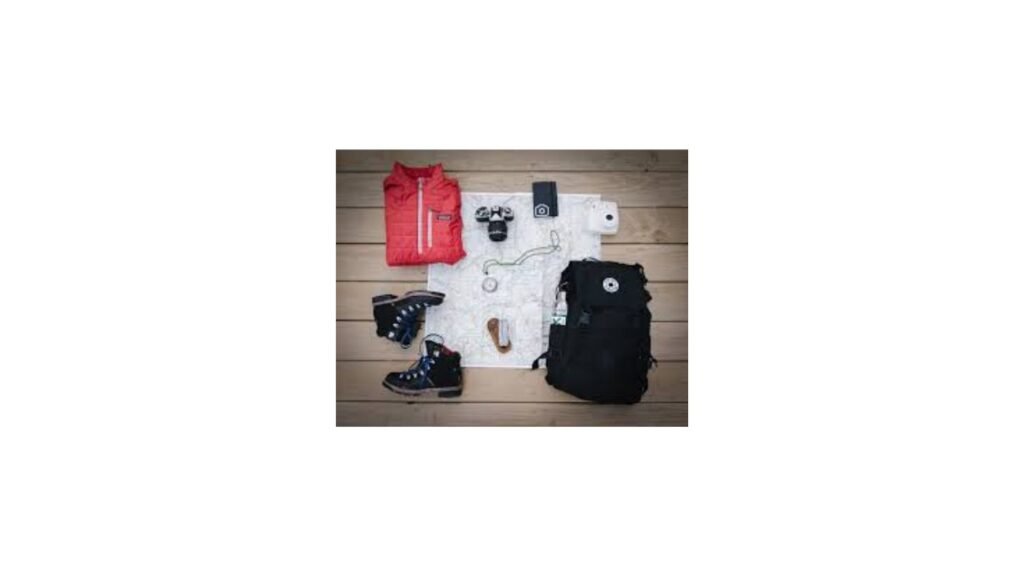Introduction to Carry-On Packing
Packing a carry-on for air travel has become an essential skill for modern travelers, enabling them to navigate their journeys with ease and efficiency. By opting for carry-on luggage, travelers can enjoy numerous benefits, including avoiding the often hefty fees associated with checked baggage. Many airlines impose specific charges for checked bags, which can quickly add up, making the idea of traveling light not only practical but financially advantageous.
In addition to saving money, having all necessary items within reach provides convenience that enhances the travel experience. When everything is packed neatly in a carry-on, travelers can easily access their belongings during the flight, whether it is for reading material, electronic devices, or personal items. This also eliminates the anxiety that often accompanies waiting at baggage claim upon arrival or dealing with potential lost luggage, thus contributing to a more relaxed travel experience.
Packing a carry-on requires thoughtful consideration and smart strategies that prioritize efficiency. As travelers navigate through airports and manage their schedules, the importance of maintaining a streamlined packing process cannot be overstated. Efficient packing not only minimizes the physical burden but also facilitates a smoother transition from one destination to another.
This article aims to provide valuable insights and practical tips on how to pack a carry-on effectively. By emphasizing the significance of packing wisely, the discussion will cover various aspects, such as choosing the right luggage, selecting versatile clothing, and utilizing packing techniques that maximize space. Ultimately, the goal is to equip travelers with the knowledge necessary for a stress-free journey that aligns with the principles of traveling light.
Choosing the Right Carry-On Bag
Selecting the appropriate carry-on bag is a crucial step in the process of traveling light. With the variety of options available, including wheeled suitcases, backpacks, and duffel bags, travelers must consider several factors to make an informed decision. Each type of carry-on bag has its unique set of advantages, and understanding these can enhance the overall travel experience.
Wheeled suitcases are a popular choice for those who prefer ease of mobility. They often include convenient features such as telescoping handles and sturdy wheels, making them ideal for navigating airport terminals. On the other hand, backpacks provide flexibility and can be worn, allowing for hands-free movement. They are particularly beneficial for travelers who anticipate uneven terrain or require access to their belongings while on the go. Lastly, duffel bags strike a balance between style and functionality, offering ample storage while being lightweight and easy to carry.
When considering a carry-on bag, size is a primary concern. Most airlines have specific carry-on size restrictions that must be adhered to, usually ranging from 22 to 24 inches in length. It is crucial to check with your airline’s guidelines to avoid fees or having to check your bag unexpectedly. Additionally, the weight of the bag should also be assessed, as many airlines enforce weight limits for carry-on luggage.
Durability is another significant factor to consider when selecting a carry-on. Materials that can withstand wear and tear, such as high-denier nylon or polycarbonate shells, are often recommended. Finally, personal style should not be overlooked; a carry-on bag that reflects your aesthetic can make traveling more enjoyable. By weighing these factors and understanding the unique features of each type of bag, travelers can select the best carry-on that suits their needs and enhances their journey.

Creating a Packing List
When preparing for travel, particularly with a carry-on, the effectiveness of your packing list can greatly influence your experience. A well-structured packing list serves as a strategic tool that helps ensure you bring only the essentials without overloading your luggage. Start by identifying the destination and duration of your trip, as these factors play a significant role in determining what items are necessary. Prioritize essentials: clothing, toiletries, electronics, and personal items are paramount in any travel package.
Begin with clothing. Choose versatile pieces that can be mixed and matched, ideally selecting items that can serve dual purposes. For example, a lightweight shirt can be worn casually during the day and dressed up for evening outings. When creating your packing list, consider the weather and activities you plan to engage in at your destination. For a week-long trip, three to four pairs of pants or shorts and a mix of five to seven tops would be a reasonable start, depending upon the climate.
Next, toiletries should be compact and effective. Opt for travel-sized containers of shampoo, conditioner, and body wash, or utilize solid bar versions to conserve space. Don’t forget necessary items such as a toothbrush, toothpaste, and any medications you may require. Additionally, while packing electronics, keep your device chargers and any necessary accessories in mind, as they are essential for maintaining connectivity and convenience. Finally, consider incorporating a lightweight backpack or tote into your packing list to facilitate easy access to items during the journey.
For reference, here is a sample packing list for a week-long trip: three pairs of pants, five shirts, two pairs of shoes, light outerwear, personal toiletries, a phone charger, and important travel documents. By utilizing this framework, you can cultivate an efficient packing list tailored to your individual travel needs.
Clothing Essentials for Light Packing
Packing light for travel requires careful selection of clothing essentials that cater to multiple occasions and climates. The foundation of a well-planned travel wardrobe lies in choosing versatile pieces that can be mixed and matched easily. Begin with neutral tones, such as black, navy, or beige, which can seamlessly coordinate with each other, allowing for a variety of outfit combinations. For example, a pair of classic black pants can pair well with a white blouse, a patterned t-shirt, or even a light sweater, providing flexibility for different settings.
Layering is a fundamental technique when it comes to packing efficiently. Opt for lightweight fabrics, such as merino wool or moisture-wicking materials, which allow for easy layering without adding bulk. A light cardigan or a slightly heavier long-sleeve shirt can serve both as a layer for warmth and as a standalone piece for warmer destinations. This strategy enables travelers to adapt to fluctuating temperatures throughout the day, making it easier to transition from day explorations to evening outings.
When selecting clothing, consider the intended activities and any potential dress code at your destination. For example, a casual dress can work for sightseeing during the day and can be dressed up in the evening with the right accessories. Additionally, incorporating items that serve dual purposes—like a stylish scarf that can be worn during the day and used as a wrap for cooler evenings—can significantly reduce the amount of clothing needed in your carry-on.
Lastly, fabric choices play a pivotal role in minimizing weight. Materials that resist wrinkles and dry quickly, such as synthetic blends, are ideal for travel, as they require less maintenance and can be worn multiple times without looking worn. By strategically choosing clothing essentials focused on versatility, layering, and appropriate fabric, travelers can achieve a light packing strategy that caters to a range of experiences.
Toiletries and Personal Items: Travel-Size Tricks
Packing toiletries and personal items efficiently can significantly enhance your travel experience. The key to mastering this aspect lies in downsizing your product sizes. Instead of bringing full-sized bottles of shampoo, conditioner, or lotions, opt for travel-size versions. These smaller containers not only save space but also help you avoid exceeding liquid restrictions imposed by airlines. Many brands offer their products in travel-sized formats, making it easier to stay within the regulations while still enjoying your preferred brands.
Another effective strategy is to utilize reusable travel containers. These containers allow you to transfer your favorite products into compact and compliant sizes. Look for sets that include various sizes for different products to maximize flexibility. Additionally, ensure that the containers are durable enough to withstand the rigors of travel without leaking. This approach not only cuts down on bulk but also presents a more eco-friendly alternative to single-use items.
Incorporating multipurpose items into your toiletry kit can further streamline your packing. For instance, a moisturizer with SPF can eliminate the need for separate sunscreen, while a shampoo that doubles as a body wash can reduce the number of products you need. Consider items that serve multiple functions to optimize your packing strategy.
Organization is crucial when it comes to packing toiletries. Using a clear, zippered pouch can keep your items visible and prevent spills. Segment your toiletries by category, such as skincare, haircare, and dental items, to facilitate easy access during security checks and throughout your travels. Essential personal items, such as a toothbrush, toothpaste, and deodorant, should be prioritized and packed in an easily reachable spot. By following these tips, you can efficiently pack your toiletries and personal items, allowing you to travel light and stress-free.

Maximizing Space: Packing Techniques
Packing efficiently is essential for those who wish to travel light with only a carry-on bag. By utilizing effective packing techniques, travelers can maximize the available space and keep their belongings organized. One of the most well-known methods is rolling clothes instead of folding them. This technique not only reduces wrinkling but also allows for better utilization of space, as rolled garments can fit snugly into the corners of the bag. Furthermore, rolling enables easier access to items, as travelers can quickly see all their clothes without rummaging through a pile.
Another popular solution is the use of packing cubes. These small, lightweight organizers help compartmentalize clothing and accessories, making it easier to sort and locate items. By grouping similar items together, such as underwear, shirts, and accessories, packing cubes can save time at security checks and during unpacking. Additionally, they can create a more structured approach to packing, which can alleviate the stress often associated with preparing for a trip.
Additionally, taking advantage of every nook and cranny in the carry-on bag can enhance the packing process. For example, consider filling shoes with socks or accessories, thus ensuring that no space is wasted. Placing bulkier items, such as a jacket or sweater, at the bottom of the bag can also help maintain balance and organization. Utilizing the outer pockets of the bag for essential items like travel documents or snacks is advisable, as these are often needed quickly during the journey.
In conclusion, maximizing space in a carry-on bag requires a strategic approach. Employing techniques such as rolling clothes, using packing cubes, and efficiently filling empty spaces can significantly improve the travel experience. By adopting these methods, travelers can ensure they have everything they need while adhering to the restrictions of carry-on luggage.
Electronics and Entertainment: Staying Charged and Connected
Packing electronics efficiently is crucial when traveling light, especially for those who frequently rely on devices like laptops, tablets, and smartphones. To optimize space in your carry-on, begin by selecting a compact laptop or tablet instead of larger devices. These options not only save weight but also provide the functionality required for work or entertainment during your journey.
When packing these devices, ensure that they are easily accessible, as airport security often requires the removal of electronics from bags for screening. Consider utilizing a specialized compartment within your carry-on or a dedicated tech organizer bag to keep your laptop and tablet secure while allowing for quick access. This separation helps protect your devices and allows for an orderly packing process.
Chargers and cables can become tangled and cumbersome. Therefore, invest in cable management accessories, such as cable wraps or small pouches, to keep everything tidy. A multi-port USB charger can also reduce the number of devices you need to carry, as it allows you to charge multiple items simultaneously. Furthermore, don’t forget to include a portable power bank, which can be invaluable for keeping your devices charged during long flights or layovers.
Entertainment is another key aspect when traveling. Downloading movies, music, or e-books onto your devices prior to your trip can provide a source of entertainment without the need for extra equipment. Streaming services often allow content to be downloaded, which can also save on data usage. Be mindful of the type of content being downloaded to ensure it reflects your entertainment preferences and becomes accessible during your travels.
When packing for international travel, consider including travel adapters that are compatible with the plug types of your destination. These devices ensure that your electronics can remain functional regardless of local power standards. Ultimately, by being strategic about how you pack your electronics and entertainment options, you can travel light while staying connected and entertained on your journey.
Dealing with Security and Airport Procedures
Navigating airport security can be a challenging aspect of air travel, particularly for those who prefer to travel light with only a carry-on bag. A well-planned approach can streamline the process and enhance the overall travel experience. It is essential to understand the current regulations and procedures governing what items are permitted in carry-on luggage. Before packing, travelers should familiarize themselves with the Transportation Security Administration (TSA) guidelines or the equivalent authority in their respective countries. This knowledge helps avoid unnecessary delays at security checkpoints due to prohibited items.
To facilitate a smoother experience at security, it is beneficial to pack items strategically. Placing frequently accessed items such as laptops, liquids, and personal electronic devices near the top of the carry-on bag can expedite the screening process. Additionally, using clear, resealable plastic bags for any liquids or gels ensures compliance with the regulation limiting containers to 3.4 ounces (100 milliliters). This organization allows for quick removal during security checks, reducing the time spent in line and improving efficiency.
Furthermore, travelers should keep essential documents—including boarding passes, passports, and identification—easily accessible. Having these items in an outer pocket of the carry-on bag not only speeds up the process during document checks but also minimizes the chances of misplacing them. Understanding and preparing for the security screening process can make a significant difference in the overall travel experience, particularly for those who wish to maintain a minimalist packing approach. By following these strategies, travelers can enhance their efficiency, ensuring a more enjoyable journey from the outset.

Understanding the Importance of Adaptability
When it comes to travel, adaptability is an essential skill that can make or break your experience. Each destination presents unique challenges and opportunities that require travelers to adjust their plans and behaviors accordingly. Developing a flexible mindset not only enhances your journey but also enriches your understanding of the culture and environment around you.
Cultural Nuances and Local Etiquette
One of the primary aspects of adapting to your destination involves understanding its cultural nuances. Different countries have their own customs, traditions, and social expectations. For instance, greeting rituals may vary significantly from one place to another. By learning about these local protocols before arriving, travelers can demonstrate respect and foster meaningful connections with local residents.
Practical Tips for Seamless Adaptation
To ease your transition into a new destination, consider a few practical tips. First, research your travel destination thoroughly. This includes familiarizing yourself with local foods, transportation systems, and currency. Second, embrace technology by downloading useful travel apps that can aid in navigation and communication. Lastly, maintain an open mind; be willing to embrace unfamiliar experiences and challenge your comfort zones. By effectively adapting to your destination, you will not only enhance your own travel experience but also contribute positively to the environment and community around you.
Final Thoughts: Embracing the Travel Light Lifestyle
As we draw to a close on the discussion about packing a carry-on effectively, it is imperative to reflect on the overarching theme of traveling light. The importance of reducing baggage cannot be overstated; it not only enhances the travel experience but also fosters a sense of freedom and flexibility. By adopting a travel light mindset, you open the door to spontaneity, allowing for a more enjoyable and less cumbersome journey.
Throughout this article, we have explored various strategies that contribute to successful carry-on packing. From selecting versatile clothing pieces and implementing thoughtful layering techniques to managing personal items and utilizing packing organizers, these tips can significantly simplify your travel. Packing light encourages you to prioritize only what is essential, thus minimizing the stress often associated with heavier luggage.
Moreover, traveling light can lead to substantial cost savings, such as avoiding checked baggage fees and expediting airport navigation. It allows travelers an opportunity to focus on the experiences and adventures awaiting them at their destination rather than being bogged down by numerous bags. Embracing this lifestyle not only enhances your travel efficiency but also promotes a more sustainable approach by encouraging fewer material possessions.
As you prepare for your next trip, we encourage you to put these tips into practice. Consider how adopting a travel light approach might enrich your experiences. Painstakingly packing each item can be replaced by the thrill of traveling with minimal baggage. We invite you to share your own insights and experiences related to effective packing strategies. Each traveler’s journey is unique, and your contributions could inspire others to embark on their own journey towards embracing the travel light lifestyle.


